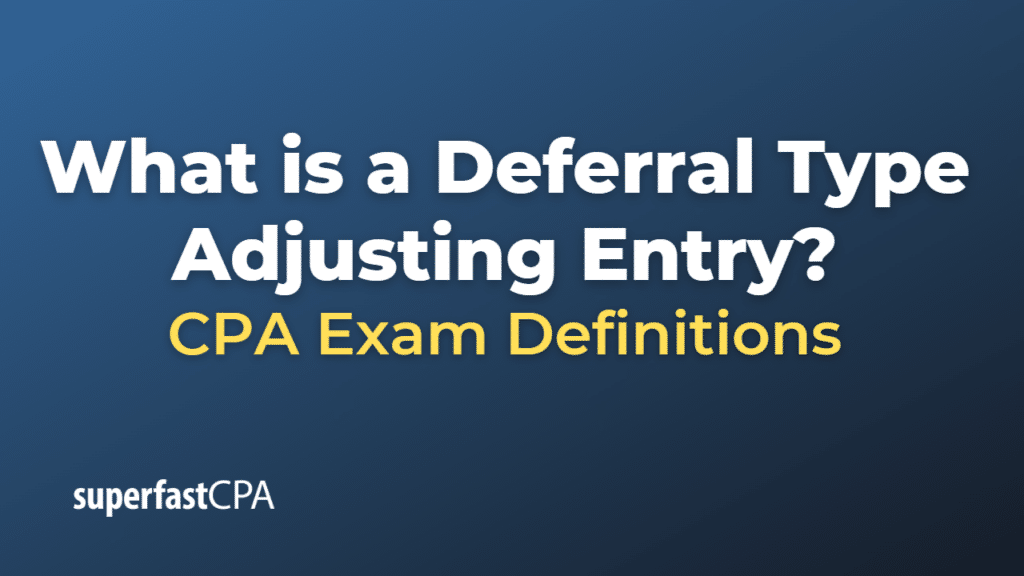Deferral Type Adjusting Entry
A deferral type adjusting entry is a journal entry made at the end of an accounting period to record or adjust the amounts of revenue or expense that have been deferred, meaning they have been recorded but not yet recognized in the income statement.
There are two types of deferral adjusting entries:
- Prepaid Expenses (Deferred Expenses): These are costs that have been paid but not yet fully utilized or consumed. For example, a company might pay for a year’s insurance in advance. Each month, the company needs to make an adjusting entry to move the portion of the prepaid expense that has been used up from the balance sheet (as an asset) to the income statement (as an expense).
For example, if a company pays $1,200 for a year’s insurance in January, it would initially record this as a prepaid expense. Then, at the end of each month, it would make an adjusting entry to debit (increase) insurance expense by $100 ($1,200 / 12 months) and credit (decrease) prepaid insurance by $100. - Unearned Revenues (Deferred Revenues): These are payments received in advance for goods or services that have not yet been delivered or performed. For example, a magazine subscription company might receive payment for a year’s subscription upfront. Each month, the company needs to make an adjusting entry to move the portion of the deferred revenue that has been earned from the balance sheet (as a liability) to the income statement (as revenue).
For example, if a company receives $1,200 for a one-year magazine subscription in January, it would initially record this as deferred revenue. Then, at the end of each month, it would make an adjusting entry to debit (decrease) deferred revenue by $100 ($1,200 / 12 months) and credit (increase) subscription revenue by $100.
These deferral adjusting entries are essential for ensuring that a company’s financial statements accurately reflect its financial performance and position in accordance with the matching principle, which requires that revenues and the expenses incurred to generate those revenues be recognized in the same accounting period.
Example of a Deferral Type Adjusting Entry
Let’s consider examples for both types of deferral adjusting entries:
- Prepaid Expenses (Deferred Expenses): Suppose a company pays $12,000 upfront in January for a one-year office rental. This payment is recorded as a prepaid expense, an asset on the balance sheet.However, the company hasn’t yet utilized this rental space for the entire year. To match the expense with the period in which it’s used, the company needs to make a deferral adjusting entry at the end of each month.This entry would look like this:
- Debit (Decrease) Office Rent Expense: $1,000 ($12,000 / 12 months)
- Credit (Decrease) Prepaid Office Rent: $1,000
- Unearned Revenues (Deferred Revenues): Now, imagine a gym that sells a one-year membership for $1,200 upfront in January. This payment is initially recorded as deferred revenue, a liability on the balance sheet.However, the gym hasn’t yet provided the full year of service to the member. To match the revenue with the period in which services are provided, the gym needs to make a deferral adjusting entry at the end of each month.This entry would look like this:
- Debit (Decrease) Deferred Revenue: $100 ($1,200 / 12 months)
- Credit (Increase) Membership Revenue: $100
By making these deferral adjusting entries, both the office rental company and the gym ensure that their financial statements accurately reflect the timing of their expenses and revenues, respectively, in line with the accrual basis of accounting and the matching principle.













